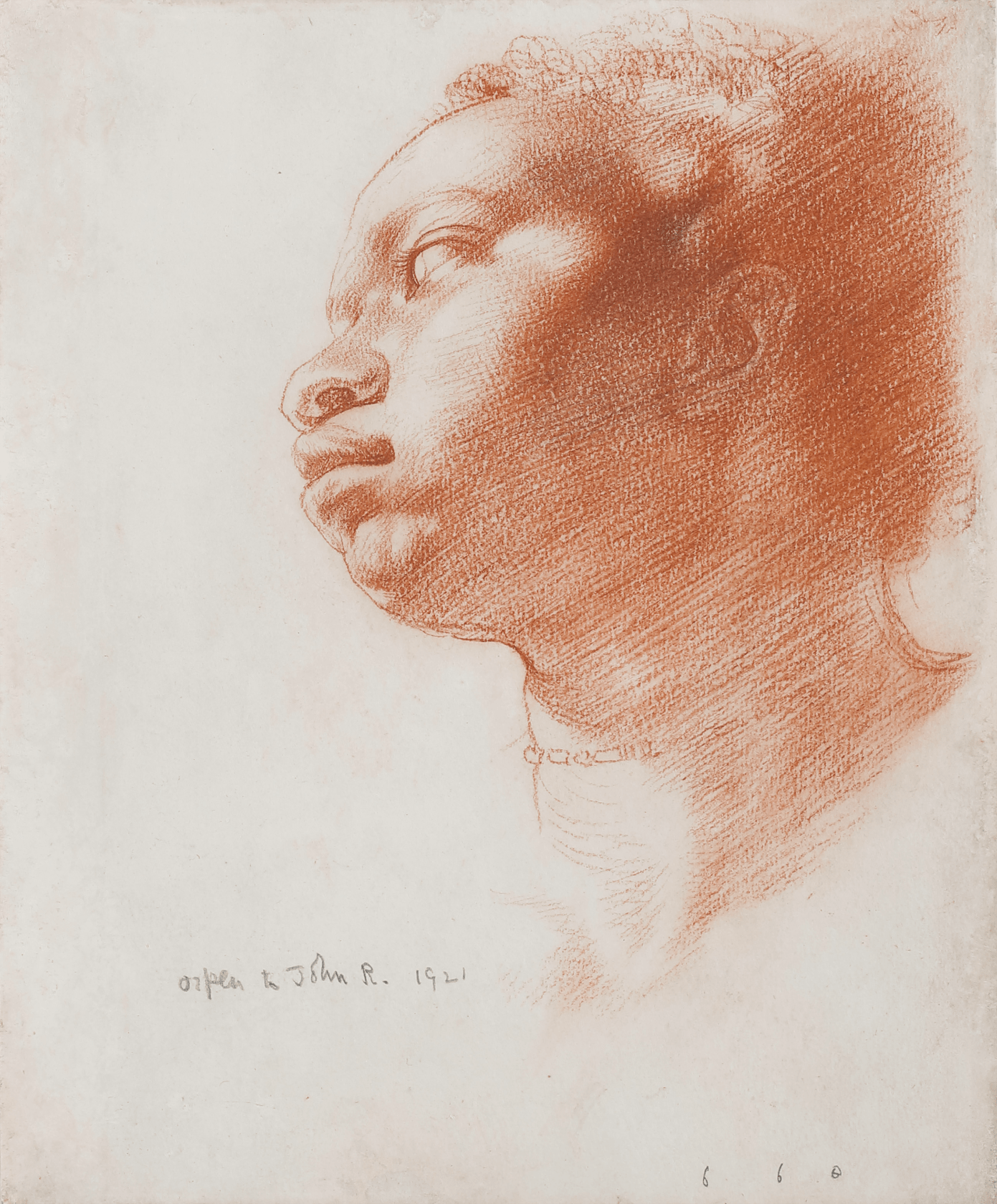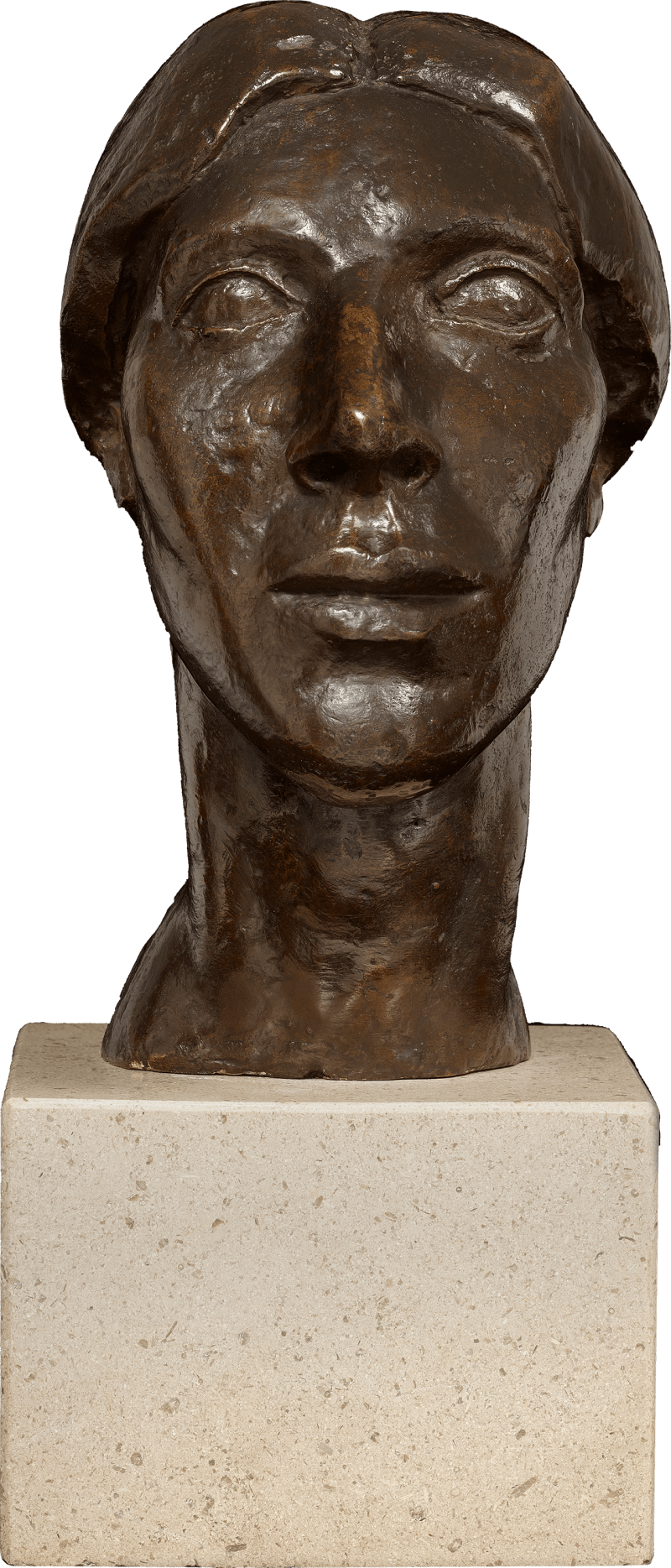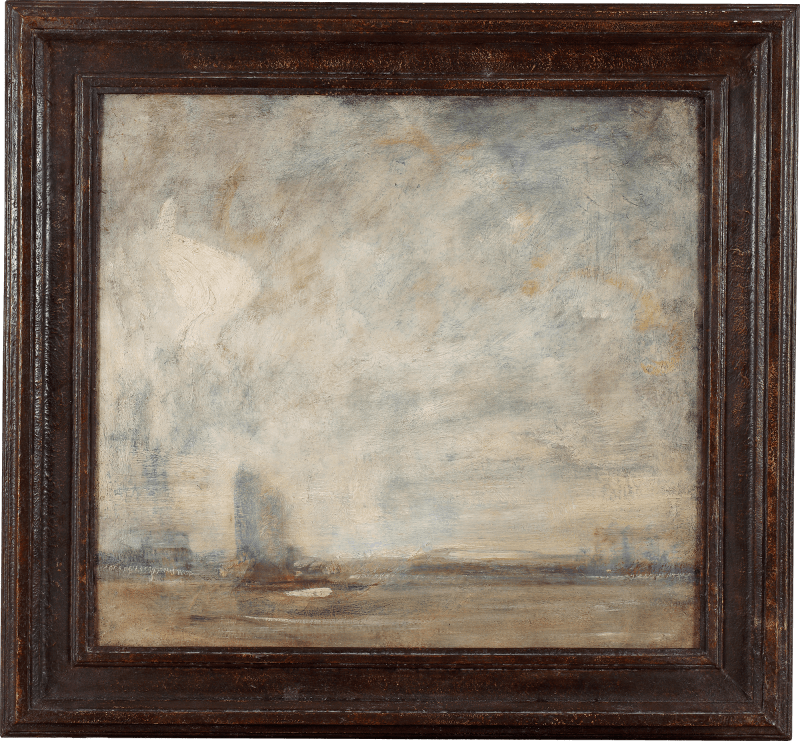William Orpen was regarded by contemporaries as one of the greatest draughtsmen of his generation, and critics marvelled at the incisive precision and expressive sensitivity of his drawings.[1] Executed in red chalk, this striking study exemplifies Orpen’s extraordinary ability to render both form and character with an economy of means. The bold contouring of the profile, the subtle modulation of tone, and the delicacy of the hatching together convey a sitter of commanding presence.
The drawing is inscribed and dedicated to ‘John R. 1921’, referring to Sir John Rothenstein, later Director of the Tate Gallery. The actual date of execution, however, is probably much earlier. Kenneth McConkey has noted similarities with Orpen’s series of red chalk studies made around 1900–1904, some of which were shown at the Carfax Gallery, with which William Rothenstein, John’s father, was closely associated. The work’s fluent handling is certainly suggestive of this formative period of Orpen’s practice.
The identity of the sitter remains unknown and...
William Orpen was regarded by contemporaries as one of the greatest draughtsmen of his generation, and critics marvelled at the incisive precision and expressive sensitivity of his drawings.[1] Executed in red chalk, this striking study exemplifies Orpen’s extraordinary ability to render both form and character with an economy of means. The bold contouring of the profile, the subtle modulation of tone, and the delicacy of the hatching together convey a sitter of commanding presence.
The drawing is inscribed and dedicated to ‘John R. 1921’, referring to Sir John Rothenstein, later Director of the Tate Gallery. The actual date of execution, however, is probably much earlier. Kenneth McConkey has noted similarities with Orpen’s series of red chalk studies made around 1900–1904, some of which were shown at the Carfax Gallery, with which William Rothenstein, John’s father, was closely associated. The work’s fluent handling is certainly suggestive of this formative period of Orpen’s practice.
The identity of the sitter remains unknown and was likely a model in a life drawing class. During his years at the Slade School of Art, he not only attended formal classes but also, as recalled by his friend Albert Rutherston, hired studio space with fellow students to continue drawing into the night, often engaging ‘strange and unusual models.’[2] Beyond the studio, Orpen also immersed himself in the study of historic collections, frequenting the Print Room of the British Museum, the National Gallery, and the Sir John Soane Museum.[3]
The drawing later entered the distinguished collection of Mary and Alan Hobart, founders of the Pyms Gallery. Established in 1975, Pyms became an influential champion of early twentieth-century British figurative art, particularly the Camden Town and Bloomsbury groups and portraitists such as Orpen. The Hobarts were also instrumental in launching the Orpen Research Project in 1996.
With its commanding profile, subtle tonal range, and eloquent simplicity, Portrait of a Woman demonstrates why Orpen’s draughtsmanship was so admired. It bridges his student discipline, his dialogue with the Old Masters, and his instinctive grasp of human individuality, qualities that have ensured his reputation as one of Britain’s foremost portraitists of the twentieth century.
[1] Slade School of Fine Art, (1907), The Slade; a collection of drawings and some pictures done by past and present students of the London Slade School of Art. London: R. Clay & Sons, p.11.
[2] John Turpin ‘William Orpen as Student and Teacher’, An Irish Quarterly Review, Vol. 68, No. 271 (Autumn, 1979), pp.173-192.
[3] Ibid.











